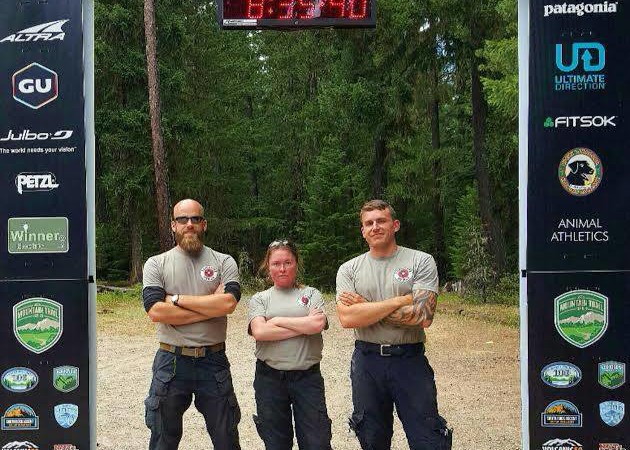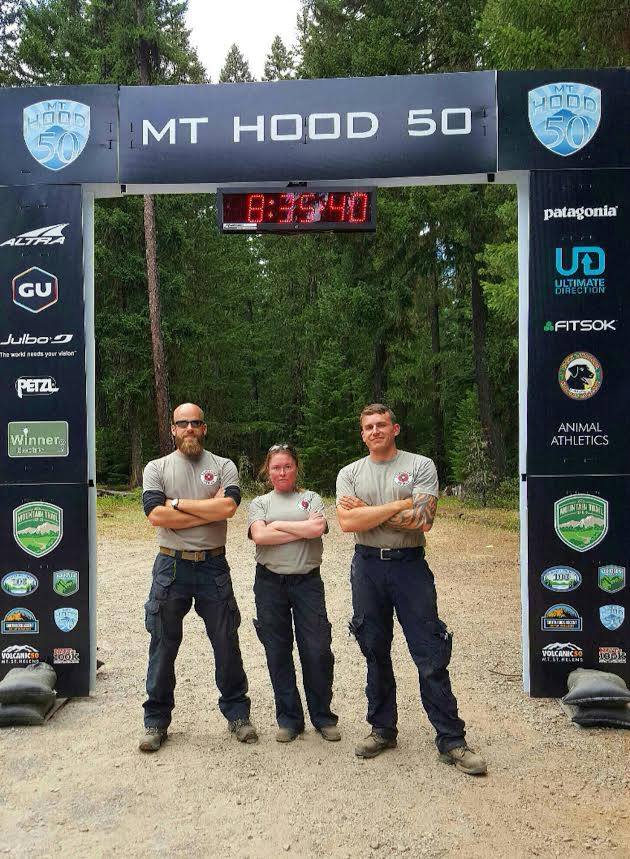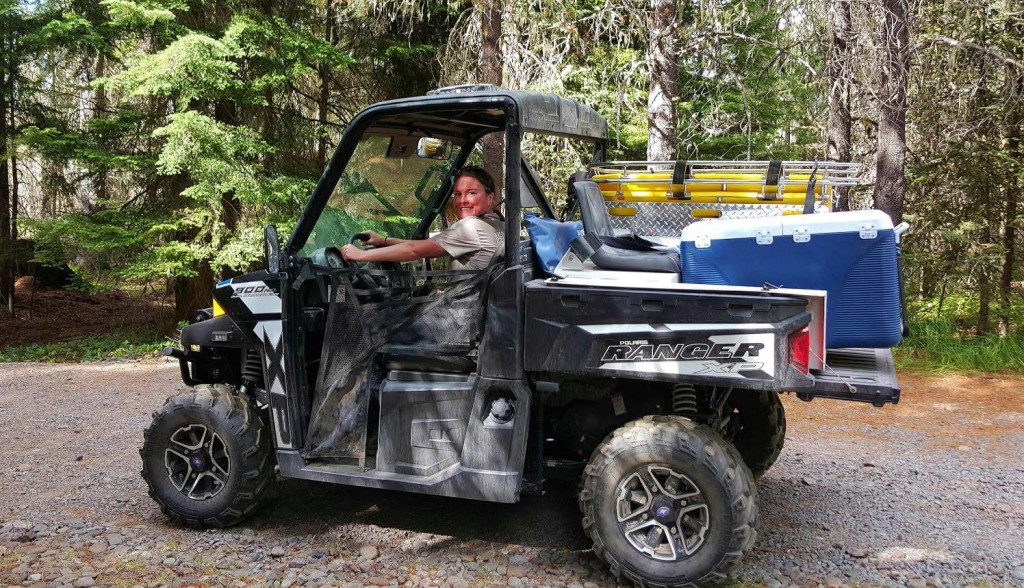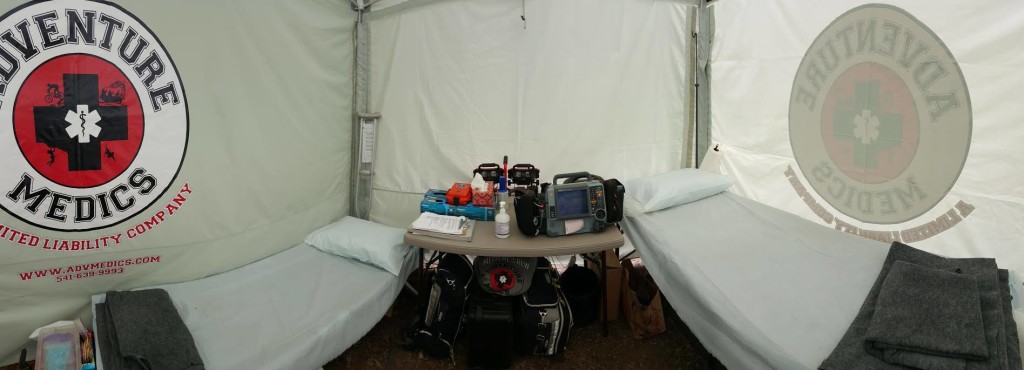
We say that you can count on every Go Beyond races to:
We do take our participants safety very seriously and you can tell by where we put our time, money, and volunteers at our races.
Most of our races are fairly remote and if a runner were to need medical assistance, calling 911 (if there were cell service) could mean hours before care and treatment could be administered. Having an EMT staffed at the finish line is helpful, but we’re committed to a higher level of safety.
For our longer races or those that are more inaccessible, we work with a few different services to have medically-trained and wilderness-oriented professionals on the course.
Adventure Medics were on hand and all over the course at this year’s Mt. Hood 50. Runners can kind of geek out over shoes and packs and hydration systems; well, we were geeking out over all the medical equipment that this team brings with them. Not only did they set up a heated tent with cots and IV stands at the finish, they had an ATV to get around to different parts of the course, a motorcycle, a bicycle with a trailer, and radios. This is a group of really nice, energetic and highly competent people. They spent the two days of the races leap frogging each other and the runners on the course and providing care to racers when they finished.
The NUT 100K is a tough race, and even though it is near a road almost the whole way, we felt having a team of medics out on the trail was important. Crackerjack First Response Specialists were fantastic. The medics moved from aid station to aid station along this point-to-point course, assisting the aid station volunteers and ensuring the runners were safe. Equipped with a mountain bike (and an extraction trailer if needed), they biked onto the course to check on a runner, and also from the finish line to the last aid station and rode out with the final runners in the dark.
The Volcano Rescue Team is a part of the North Country Emergency Medical Service and is a big part of Volcanic 50. This volunteer group handles hasty and technical mountain rescues on Mt. St. Helen’s and are trained in all aspects of emergency medical services and mountain rescue, cave rescue, avalanche search and rescue, high angle rescue and crevasse rescue. Last year and this year, they have a helicopter on stand-by. They are also the race beneficiary.



Most of our races are in areas where there is no or very limited cell service and communicating with volunteers at the aid stations and on the course would be impossible if it weren’t for the HAM radio operators. Having this contact ensures that if a racer gets in distress, word can get to a medic and the race organizers much quicker. The HAM radio crew we work with are all volunteers and they really enjoy helping the runners. We coordinate with them before a race to determine where they can best set up and send and receive signals. During the event, they are radioing information to the start/finish area of when first and last runners go through aid stations and also provide a way for the aid station volunteers to communicate any needs they have, like additional ice or cups.
The safety of our races and volunteers is paramount and an area we are not willing to compromise.